Creating an SEO-friendly content strategy isn’t easy.
With so many keywords popping up across different stages of research, you lose focus and time.
What if there’s a better approach?
Just organize your keywords systematically with keyword clustering. It helps you gather, segregate, and target many relatable search terms for a single page. As a result, it gives keyword research a direction and purpose.
But can keyword clusters boost content creation in SEO?
Here’s a step-by-step guide on keyword clustering, its benefits, and how content marketers can leverage this technique to enhance search engine performance and build a topic cluster content strategy.
Table of Contents
What is keyword clustering?
Keyword clustering is the process of grouping similar keywords based on what the user or target audience is trying to look for.
Keyword clustering allows content marketers to filter and analyze a large volume of keyword data.
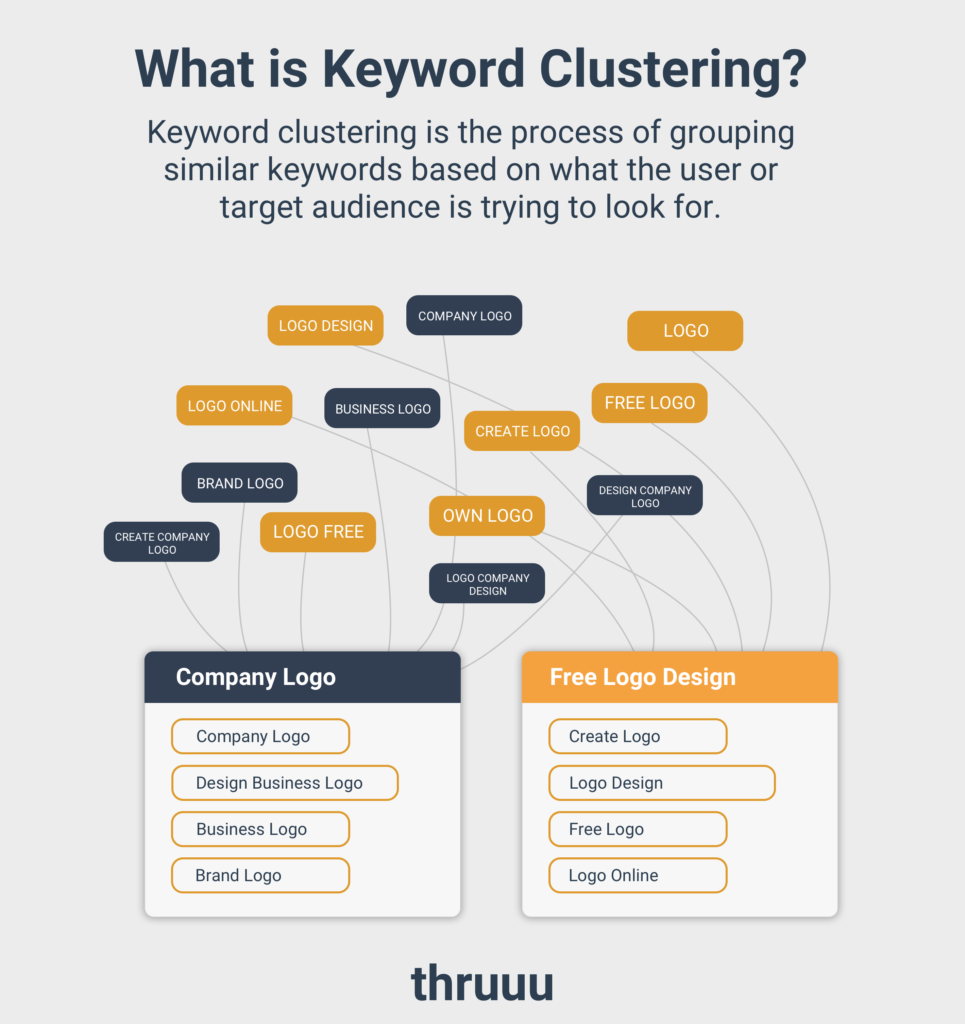
The best SEO strategists use keyword clusters to create quality content. This is because the technique directs your keyword research around a user’s search intent.
SEO marketers and copywriters primarily create keyword clusters to target a range of topics related to their industry.
Keyword clusters help create authoritative content that’s informative and relevant, helping your content rank for the intended search terms.
As a result, keyword clustering widens content visibility across SERPs.
It’s a smart way to strengthen your SEO strategy every time you need to create fresh content.
How does keyword clustering work?
A keyword cluster groups related search terms to cover a specific search intent.
Instead of focusing on a single keyword and losing a chunk of the market share, clusters can cater to a wider target audience.
You can address multiple queries in your content and provide relevant information in a blog post by adding different but related search terms.
For instance, you can create a blog post using a cluster of keywords like weatherproof paint, weatherproof paint for hardwood, and best weatherproof paint.
All these terms relate to the same search intent of a user, i.e., to buy weatherproof paint.
With such a keyword cluster, you can cover all these terms in a single article.
There are two specific keyword grouping techniques:
- Semantic clustering
- and SERP-based clustering.
Let’s explore their differences.
Semantic clustering
Semantic clustering is based on Natural Language Processing (NLP), so it organizes semantically relatable terms into groups or clusters.
Semantic clustering finds similarities in the meaning of words and puts them together.
In semantic clustering, you group keywords like “athletic shoes,” “sports shoes,” and “tennis shoes.” All three keywords are closely related to each other as they mean the same thing.
SERP-based clustering
SERP-based clustering groups keywords based on SERP similarities.
SERP-based clustering allows content marketers and SEO strategists to make sense of their keyword lists, organize topics, and put together keywords on the basis of what the searcher is looking for.
For instance, keywords like “best golf balls” and “top golf balls” show the same URLs in the top search engine results.
The thruuu SERP Similarity tool indicates that the two keywords share 5 common URLs in the top 10.
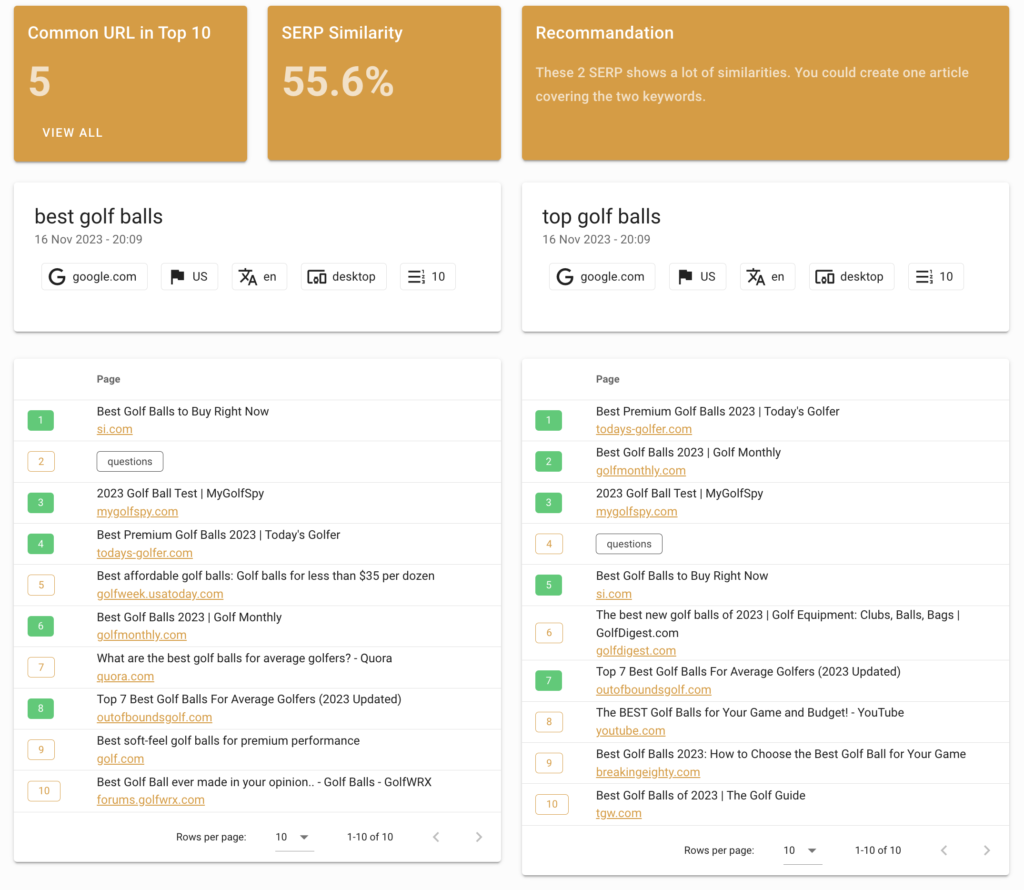
Based on their SERP similarities, such keywords are grouped together as they signify a similar user’s search intent.
Most SEO experts prefer SERP-based clustering as it uses data from Google to group keywords.
With SERP-based clustering, you can filter your keyword list effectively by providing results based on the user’s search intent.
As a result, you avoid overlaps in content ideas, topics, and search terms in your final keyword list.
Deep Dive into Topic Cluster Content Strategy
In our complete guide, we will explain essential concepts such as keyword clustering and the key concept of a pillar page and content cluster.
Keywords Clustering vs. Topic Clusters
Both keyword clustering and topic clusters help optimize your content strategy.
Content marketers start with keyword clustering and eventually create topic clusters.
By grouping related search terms, you create a list of keywords, each of which can be used to represent a topic.
With topic clusters, you can build your content strategy around key topics central to your business versus building many web pages around a single keyword.
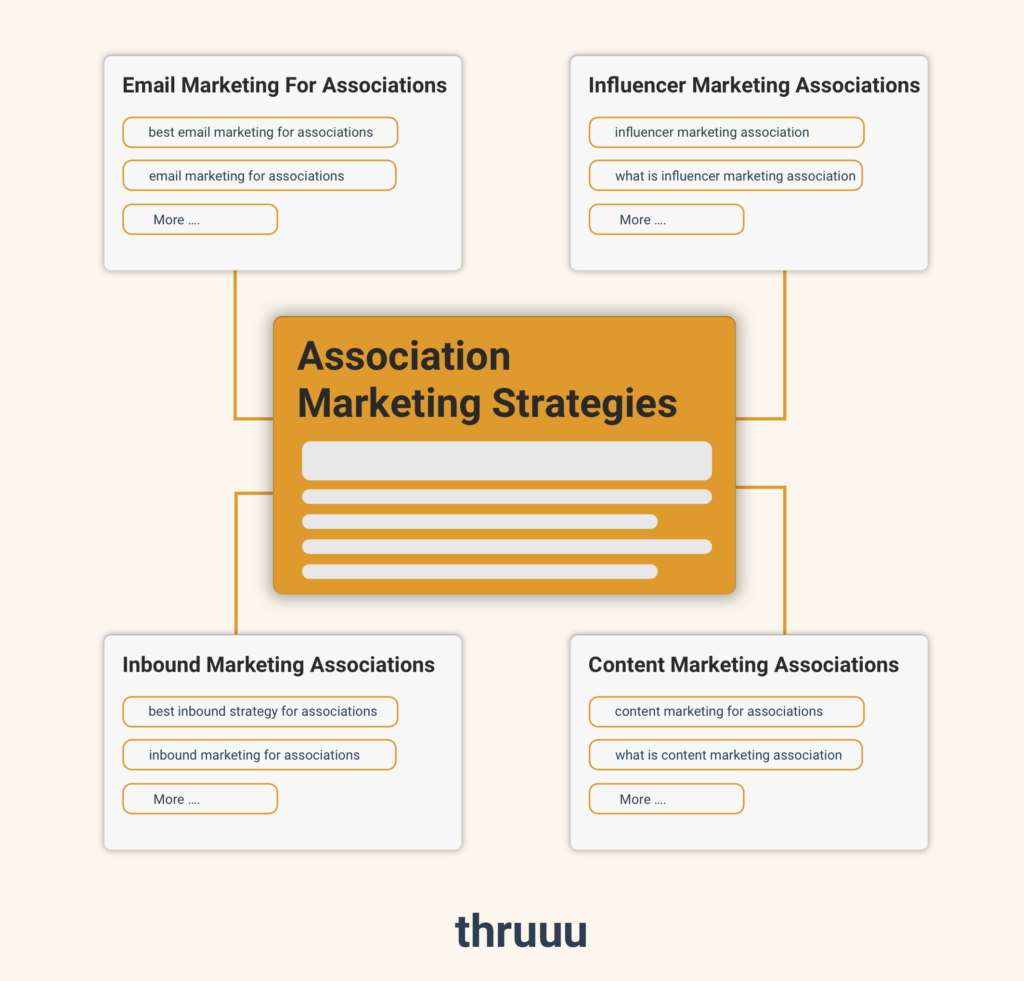
How to do keyword clustering
Before diving into keyword clustering, it’s important to target a primary keyword related to a recent query based on your SEO goals.
From here, you’ll create a list of keywords by identifying variations of the keyword from your favorite keyword research tool (like Ahrefs).
You can also export a list of keywords from the Google Search Console.
Here are three ways to process your keyword list into clusters:
Manual clustering
This form of clustering works well when targeting a short list of keywords.
It includes analyzing SERPs and comparing each keyword against each other.
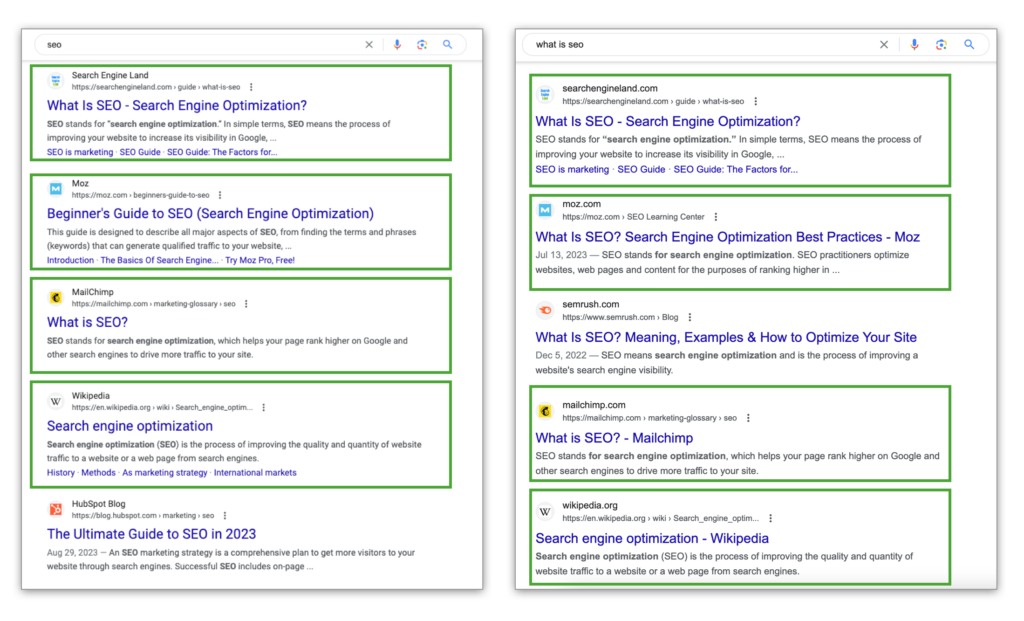
When you’re working with a short list, the process is easier to handle and less confusing.
Say you’ve got 1,000 keywords and need help finalizing your topics. This is when manual clustering becomes problematic.
This is why most content strategists switch to automated solutions.
Cluster keywords with ChatGPT
Here’s an example of a ChatGPT prompt grouping a list of keywords.
🤖 Keyword Clustering Prompt
You are tasked with optimizing a website in the <enter your industry>. Below is a list of keywords related to different aspects of <main topic>. Your goal is to create content clusters that group these keywords logically. Each cluster should have a unifying theme and can serve as a foundation for comprehensive content on the website. Please provide the names of the clusters and the keywords within each cluster. Briefly explain the rationale behind grouping these keywords together.
List of keywords:
<Enter your list of keywords>
Although ChatGPT is a trendy topic cluster tool, it has limitations.
ChatGPT groups keywords based on semantic clustering.
As a result, the keyword clusters don’t help you target users with varying search intents as the tool doesn’t analyze data from search engines.
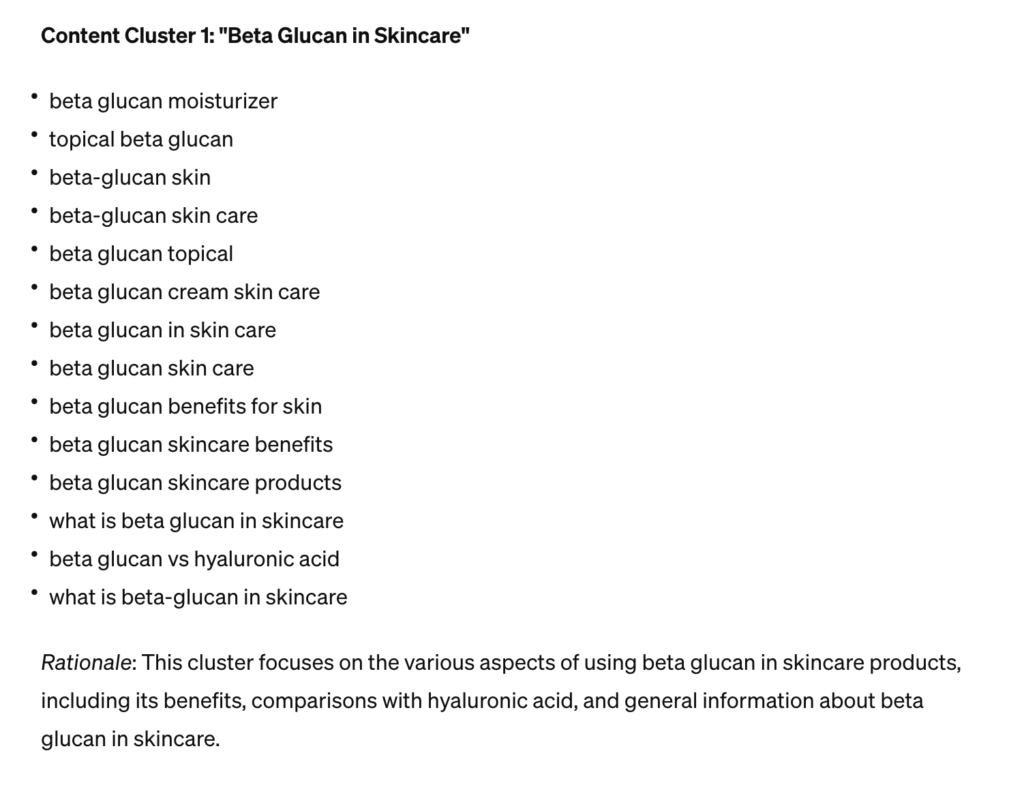
If you have a long list of keywords requiring analysis, ChatGPT is not equipped to handle large volumes of data.
When the system is overloaded with data, or you exceed the limit, it generates weird messages or errors. As a result, this reduces your chances of analyzing more keyword data.
Use a keyword clustering tool
With the thruuu keyword clustering tool, you can expedite the keyword research process by analyzing SERPs in real-time.
Based on SERP similarity, the tool groups keywords displaying SERP with 4+ URLs in the top 10 results.
Featuring a user-friendly interface, this keyword grouping tool helps filter a long keyword list by extracting data from high-ranking pages.
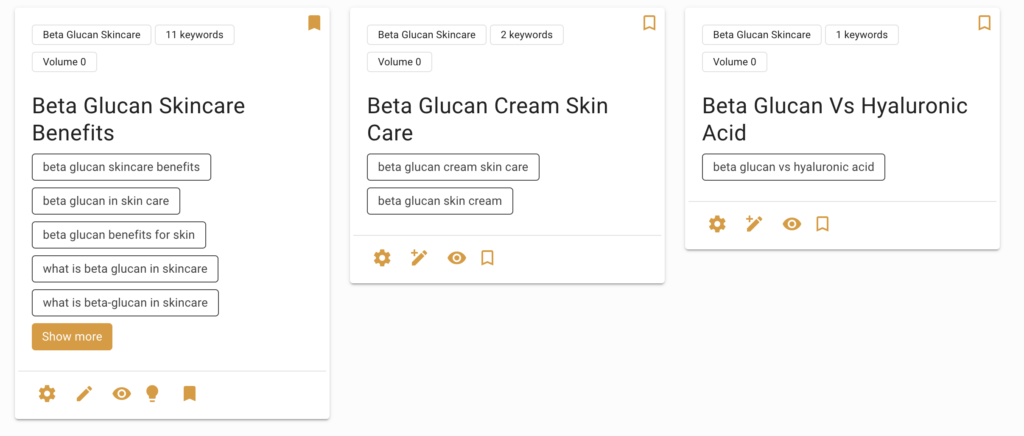
It provides valuable insights on the topic you want to cover and helps you explore new topic ideas.
Here’s how you can start clustering keywords:
- Upload your list of keywords and search terms.
- Select from any Google search engine.
- Add your domain to get statistics about site performance.
- Create topic clusters based on keyword groups.
- Analyze topic clusters from competitor content.
- Create an SEO-friendly plan and content briefs
💡ChatGPT Clustering vs. Keyword Clustering Tool
Did you notice the two previous screenshots?
They show the results of the keyword processing for the same set of keywords with ChatGPT and the thruuu keyword clustering tool.
The version generated by ChatGPT grouped together all the terms related to Beta Glucan Skincare, while the keyword clustering tool showed more granularity and suggested three distinct keyword clusters: one about the benefits, one about skincare cream, and one comparing Beta Glucan to Hyaluronic acid.
The latter option is closer to the user’s search intent and suggests three topics to be covered in three separate articles.
Learn more about grouping keywords and generating a content strategy with thruuu.
What are the benefits of keyword clusters
Improve ranking and visibility
Search engines crawl through websites for indexing purposes. They analyze content quality and search for relevance.
When applying keyword clusters in your content, you cover search terms critical to the search intent of a target audience.
This pushes the search engines to pick up your content, especially if it answers most of the users’ queries.
As a result, clusters help improve content visibility and keyword ranking across top SERPs.
Get a focused list of topics
The hardest part of keyword research is dealing with too much data.
Besides losing track of time, you also forget what the primary goal is for creating a content piece.
It’s not easy to segregate a large volume of keywords or generate topic clusters that can achieve your content goals.
But with keyword clustering, you acquire a focused list of search terms. This allows you to create relevant topics without any overlaps.
Create content around search intent
Another important practice in SEO marketing is generating quality content that’s search-intent based.
Keyword clustering allows you to rank for various keywords having the same intent on a single page.
Additionally, you can cover a lot of relevant information under sub-topics that include variations of the primary keyword.
By adding these search terms, your content becomes visible across multiple search queries.
Build authority on subject matters
Being a frontrunner on SERPs for any kind of topic requires subject matter expertise.
With keyword clustering, you can set your authority on a particular topic. These clusters also include general questions from SERPs.
You can address these queries in your content and sound like an expert.
As a result, clusters help create content from a fresh perspective, boosting site authority and visibility across search intents.
Assist with keyword mapping
An essential part of content analytics is designing your business’s information architecture.
This includes drafting content for the website, creating pillar pages, and designing a knowledge base.
With keyword clustering, you can connect different content pieces together with internal links.
As a result, clusters build semantic relationships between pages and improve site architecture by simplifying content analysis.
Avoid keyword cannibalization
One of the biggest benefits of keyword clustering is that it makes research, analytics, and optimization more manageable by identifying and removing irrelevant queries.
By segregating keyword data for different topics, you don’t publish similar content or optimize too many pages for the same keywords.
Additionally, you can avoid keyword cannibalization and ensure specific pages rank for targeted search terms.
Scale your content production
Using a keyword clustering tool, you can scale content production tenfold.
Such automated tools help segregate keywords and organize topic ideas.
You create content briefs and pitch content ideas faster.
Additionally, you are better positioned to boost content velocity with keyword clustering, especially when working with a large team of writers.
As a result, you can execute your content strategy more effectively.
Support content marketing efforts
Keyword clustering provides relevant keyword data for generating other kinds of content, like marketing collaterals.
From email copies to press releases, clusters help marketers generate fresh content ideas.
It supports PPC, social media copywriting, and other marketing efforts by helping you repurpose content.
It also provides long-term scalability as you have plenty of keywords to target over time for different content types.
Empower Your Content Team
Our end-to-end content optimization solution empowers your team to crack the Google algorithm, craft exceptional content, and achieve remarkable organic search results.
